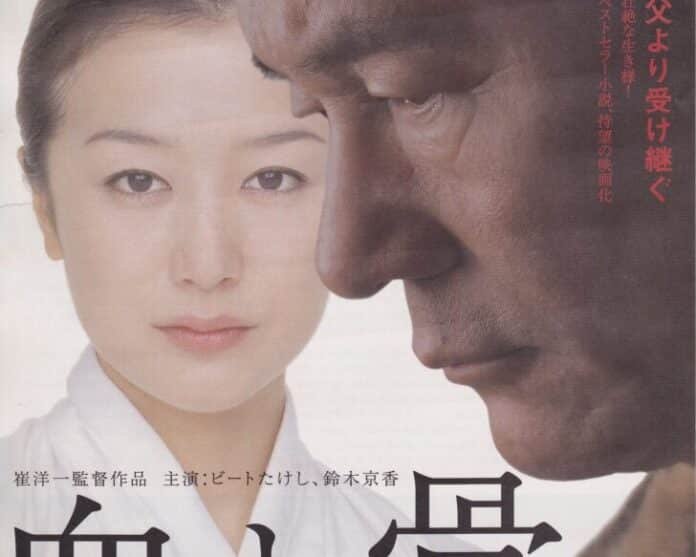
Tsuruhashi Korea Town in Ikuno Ward is a major tourist attraction. Plenty of Japanese and foreign visitors stroll its markets, buy Korean street food along the main strip, seek out the many Korean restaurants offering the most original Korean dishes. Travel agencies located in the area offer great deals on discount tickets to South Korea, quite a few of them seem to specialize in trips to Jeju Island, or at least have large posters in their windows featuring images of South Korea’s southern-most island.
That’s no coincidence. A large part of the zainichi (Korean-Japanese) population of Ikuno Ward can trace their family history back to that island.
Today considered by South Koreans as a sort of sub-tropical vacation paradise, Jeju Island has a very violent history. The most recent of those violent episodes took place in 1947 when the pro-communist Jeju Uprising ended with thousands killed by government troops and many more fleeing to Japan. Many of those refugees settled in Ikuno Ward which already had a large population of Jeju islanders, dating back to previous decades.
Life was harsh in post-war Japan and even harsher for resident Koreans who had, by all accounts, to overcome all sorts of discrimination.
Strolling through Tsuruhashi today while enjoying the local delicacies won’t give you an idea of the struggles the area went through in the past.
Table of Contents
Blood and Bones (Japan, 2004) 血と骨
The 2004 movie Blood and Bones (Chi to hone), directed by Yoichi Sai and starring Takeshi Kitano however will. But be careful what you ask for. The film is extremely drastic and violent and it seems to offer no hope in any future whatsoever… though exactly the developments depicted in the movie did eventually help to create modern Tsuruhashi.
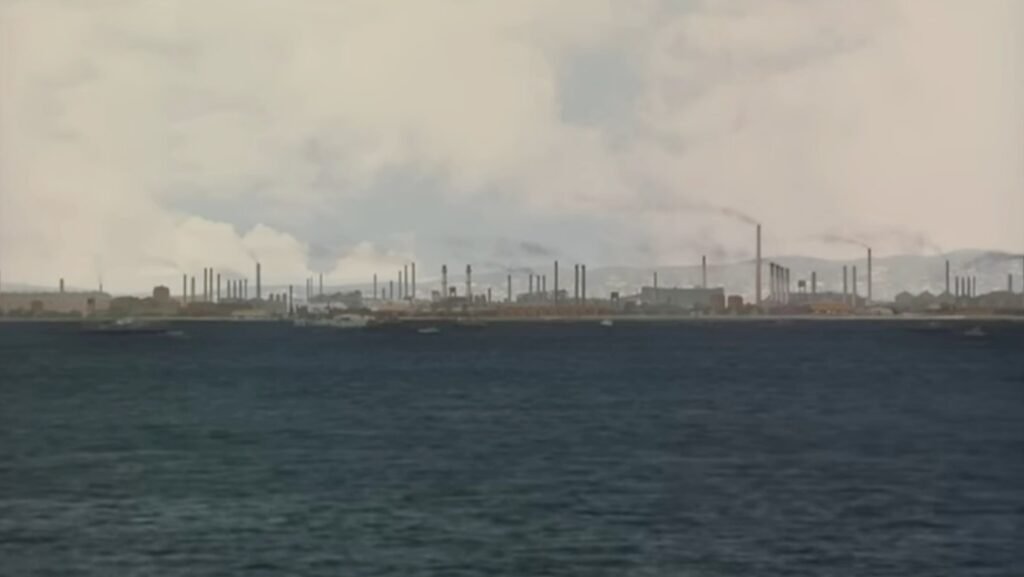
The film starts off with a lot of expectation. A young Korean from Jeju Island named Kim Shun-pei is shown on an immigrant ship in 1923. Once the many smokestacks of Osaka come into view the whole deck full of Jeju islanders rejoices. ‘That’s where the future is!’ ‘That’s where we will find relieve from poverty and semi-feudal exploitation!’ they seem to acclaim in a mangle of voices.
As movie viewers we don’t know what exactly happened to Kim Shun-pei for the next twenty-two years. We only see him re-appearing shortly after the war, raping his estranged wife being the first thing on his mind. Just to show her who is in charge again after the years of separation.
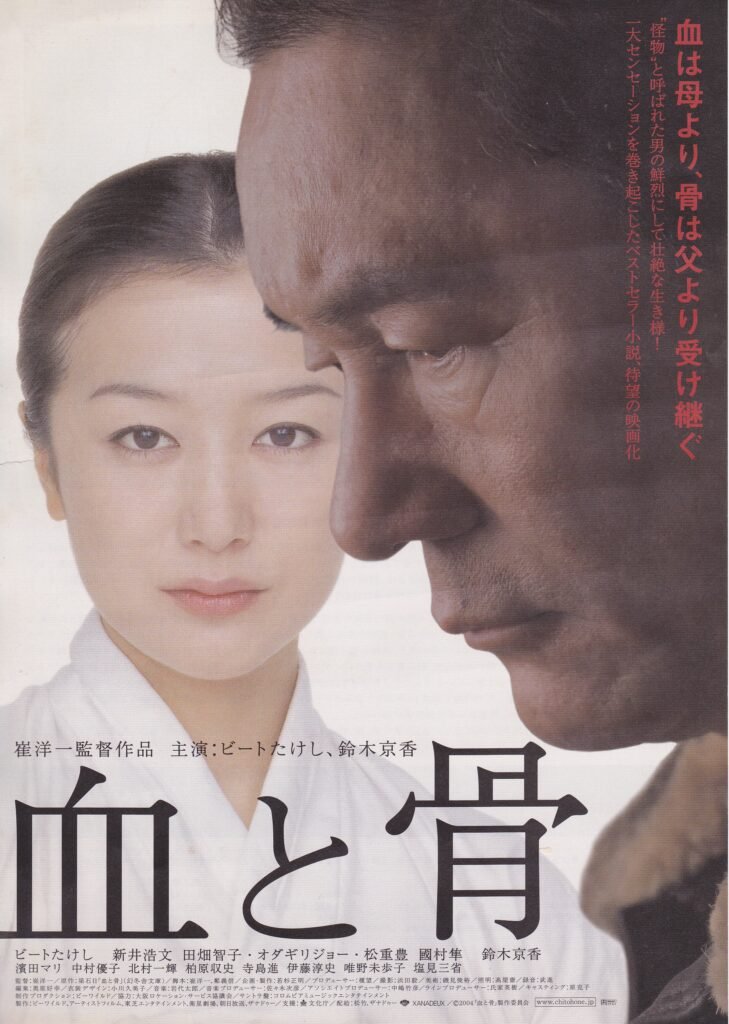
Semi-biographical Background
The movie is based on the semi-autobiographical book Blood and Bones by Yang Sok-il, first published in 1998 and relating the story of how Yang grew up with “Kim Shun-pei” as his father. The film tells the story from the son’s perspective, named Masao in the movie. An off-screen narrator relates the son’s perspective at times to give background information that could otherwise not be incorporated into the movie.
It’s been made clear that Kim Shun-pei had been a domineering, violent presence in the family even before the war years. Where he went during the war is left open. Judging from the character traits he later displays, he might well have been a war criminal of the worst sort
Post-war Osaka
Kim Shun-pei needs to get on his feet in post-war Osaka. He moves his family to a neighborhood in Tamatsu 3-chome, just north of Sennichimae Dori. Sennichimae Dori is a wide thoroughfare running east to west through southern Tamatsu, Higashinari Ward. Tamatsu was almost exclusively Korean at the time. It was (and is) in close walking distance from Tsuruhashi.
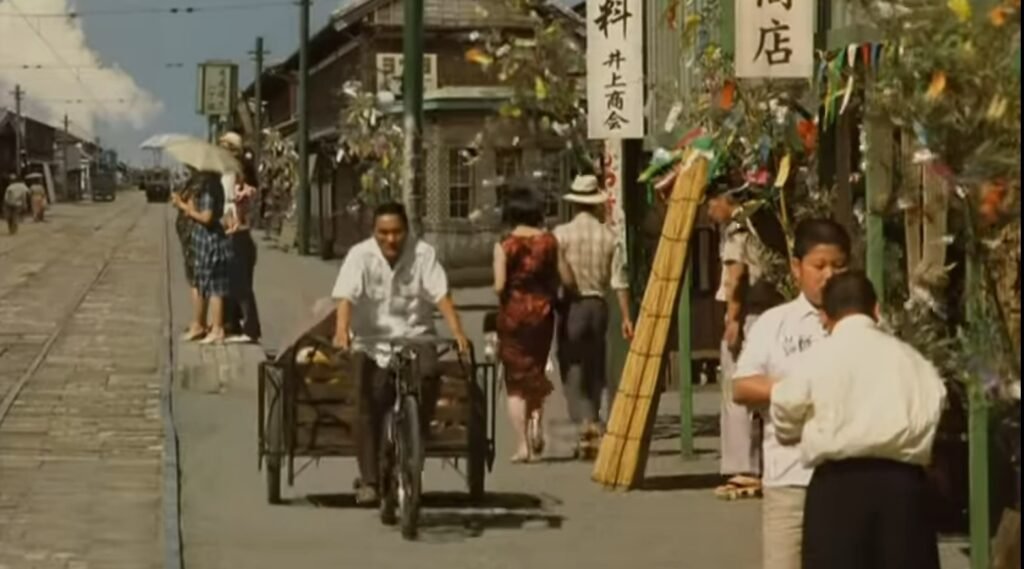
In Tamatsu, Kim Shun-pei opens a fishcake factory with money he rudely demands from family members as donation.
He treats his workers like a concentration camp commander would treat his prisoners. Once, when a worker asks for overtime pay, Kim Shun-pei picks up a red-hot coal and shoves it into the worker’s face. When the worker coils up in pain on the floor, Kim just screams at him, “Go back to work!”
At the same time, Kim Shun-pei begins to assemble a succession of young mistresses, fathering numerous children with them.
His stamina food consists of rotting meat full of wriggling worms. That may or may not be a real old Jeju Island men’s dish. His female acquaintances refuse it violently, his son pukes when he sees the father eating it. “You are weak!” is the father’s reaction.
There is no family celebration that doesn’t end up in a large brawl initiated by Kim, none of his mistresses escapes his heavy beatings. The man is a monster, and he is played in an incredible intense way by Takeshi Kitano.
Just watch him sitting cross-legged at one of those small tables placed on a tatami floor, eating and heavily drinking and then overhearing what he perceives as an insult. Slowly but determinedly, he will get up and invariably attack without any hesitation. He knows where to put his blows and he knows that he can’t lose.
Generally, the fights take place among family members – and it’s Kim Shun-pei who has the money and thus the power.
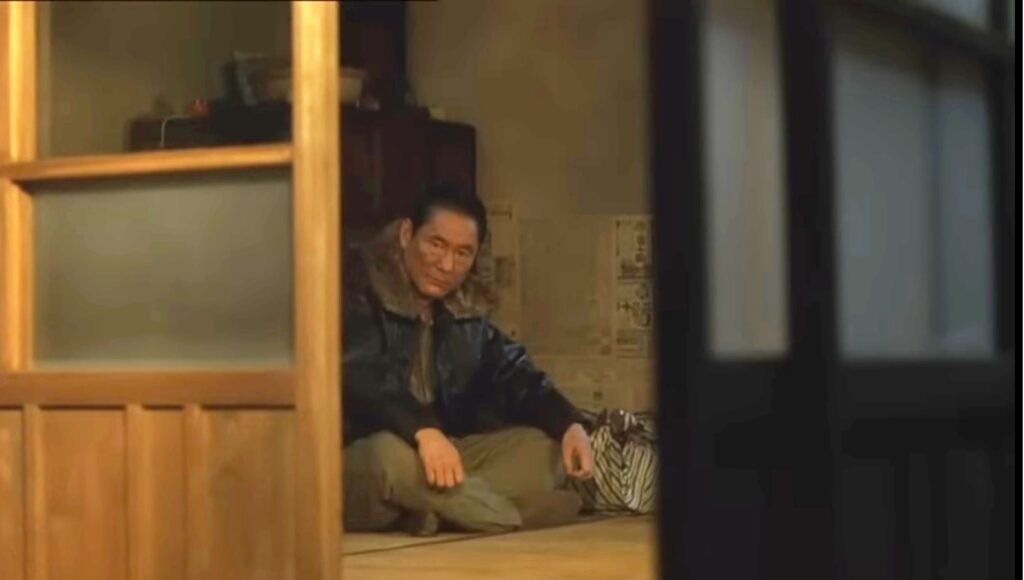
Takeshi Kitano
Rumors have it that Takeshi Kitano, who portraits Kim Shun-pei in the movie is of Korean heritage himself. Those rumors have never been conclusively proven nor disproven.
In any case, Kitano, born in Tokyo in 1947, grew up in extreme poverty, partly due to his father drinking and gambling the family money away.
After a number of odd jobs including a stint as elevator operator in a strip club, he switched to comedy and made his name as the outrageous comedian Beat Takeshi. To this day, most Japanese know him as Beat Takeshi, the comedian and outsized TV personality. In fact, even in Blood and Bones, he is credited as Beat Takeshi in the Japanese-language credits.
Kitano has however also directed movies which earned quite some acclaim on the Western art house circuit, including Violent Cop (1989), Sonatine (1993) and Hanabi (1997). Kitano has also been an actor in numerous Japanese movies, perhaps most famously in Kinji Fukusaku’s Battle Royale (2000).
Most of his movie roles have been either as a yakuza gangster, as a violent police officer or as prison camp commander. Kitano’s acting is always very intense and designed to portray violence. You wouldn’t want to mess with any of the characters he has portrayed throughout his career.
For the role of Kim Shun-pei in Blood and Bones, Kitano was absolutely perfect.
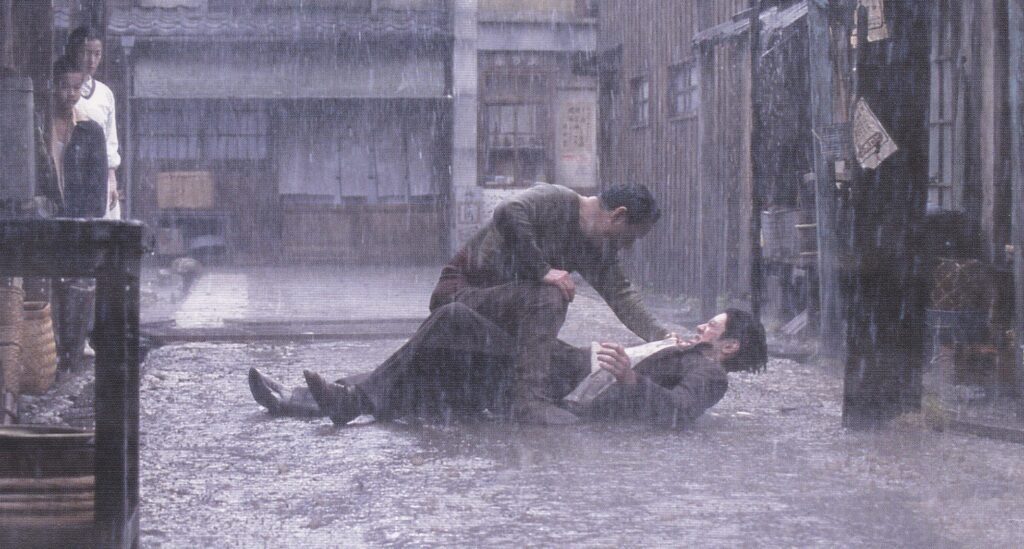
The Director: Yoichi Sai
The director of Blood and Bones, Yoichi Sai (1949 -2022) was a zainichi Korean himself and also known under his Korean name Choe Yang-il. He was keenly aware of the history of Korean residents in Japan and this knowledge clearly shows in the movie.
Osaka Locations
Takeshi Kitano brought the character of Kim Shun-pei vividly to life, Yoichi Sai provided the direction based on his deep understanding of the developments of Korean culture in Japan… but it were the folks re-creating the post-war Osaka neighborhoods where the movie unfolds that gave the film its ultimate authenticity.
No obvious Osaka landmarks such as Osaka Castle or Dotonbori Bridge are ever on display in the film. Rather, the movie concentrates on the immediate neighborhood where Kim Shun-pei lives and operates – “the north side of Sennichimae Dori east of the Tamatsu 3-chome intersection, and around the ‘Taiseidori 1-chome’ streetcar stop (discontinued in 1969)”, Ayabeda Japanese movie history blog informs.
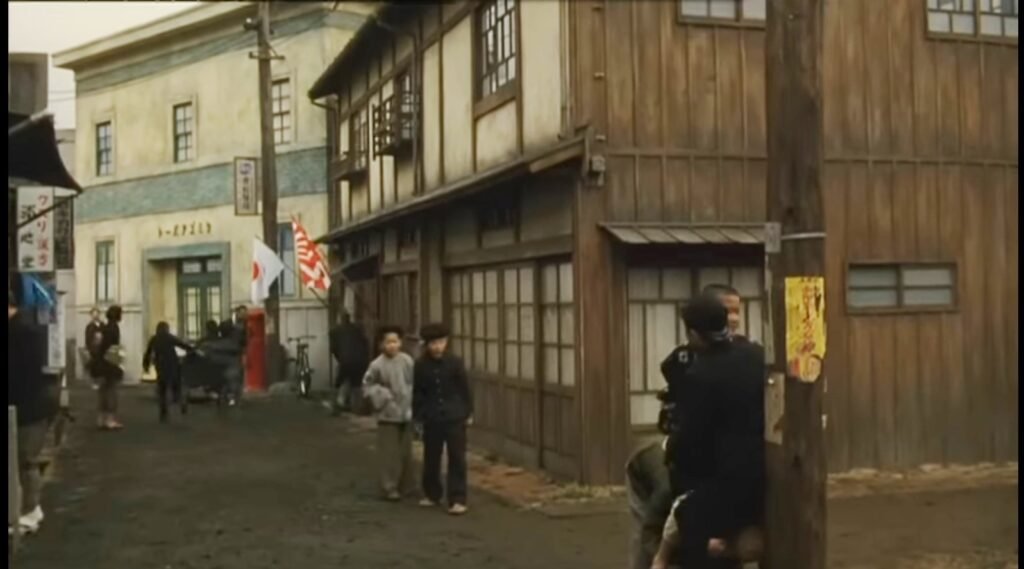
This neighborhood was meticulously recreated on an improvised studio lot. I got to admit here that I once met one of the leading figures painstakingly re-creating those old Osaka settings. We talked about the movie and his work while sitting on the shore of Lake Biwa, Japan’s largest lake. If memory serves right, he said that the Blood and Bones studio lot was “very close to here”, meaning the plains east of Lake Biwa in Shiga Prefecture. It was a chance encounter and I didn’t query him in any capacity as a movie writer.
Be that as it may, the re-created Osaka locations make the film the Osaka movie it is. Extreme attention is paid to even the smallest details and that includes the details of how an immigrant Korean in Japan would style his house. Slightly different from a traditional native Japanese house.
As detailed as the art direction is, it is very much subdued at the same time. The neighborhood, the family house, the general environs are generally treated with an attitude of “well, that’s what it looked like back then”. No matter the research and the detail-oriented work. The environs are supposed to look natural for the characters to move in about, at no point do they try to be the main focus of attention.
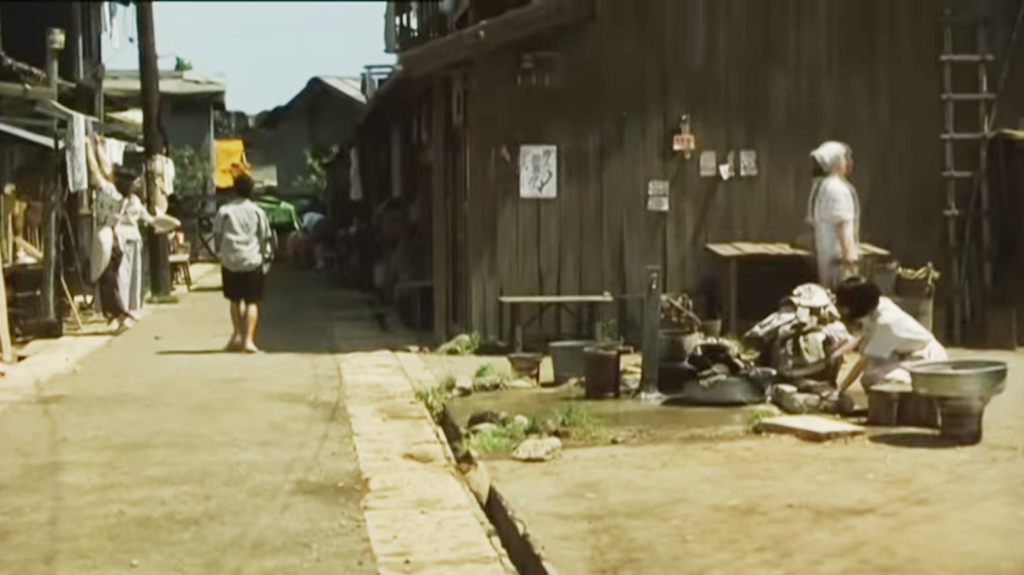
Osaka Through the Times
After making a fortune with his fishcake factory, Kim Shun-pei shuts down the factory, focusing on a new and even more promising career as loan-shark. He’s always been greedy but now he’s on to the real riches. His usury drives debtors into suicide. Kim doesn’t care as long as can recoup his money.
At the same time, historical developments deeply affecting the Korean community in Japan make it to the screen.
Briefly depicted are the post-war struggles between the Koreans who had supported Japan in the war and the ones who had hoped that a defeated Japan would bring about the liberation of Korea.
Korea, or rather two different Koreas did become independent after World War II but that also meant that Koreans in Japan lost their Japanese citizenship. People had to decide if they wanted to get affiliated with the dictatorial regime of Rhee Syng-man in the south, supported by the U.S. or the communist regime of Kim Il Sung in the north.
Although most Korean residents in Japan at the time originated from what became South Korea, and that includes Jeju Island, a large percentage of them opted for Kim Il Sung.
North Korea seemed to be a beacon of hope. It promised paradise for the Koreans in Japan, it seemed to hold up the old Korean values, it was strictly anti-Japanese and anti-American.
One young member of Kim Shun-pei’s family, a sensitive young poet, falls hook, line and sinker for the North Korean propaganda. After a short stint as communist rebel resulting in prison time, he departs for North Korea as part of the “Repatriation Project” which relocated about 90.000 zainichi Koreans and some of their Japanese spouses to North Korea between 1959 and 1984.
Enthusiasm about the project was great in the early days and we see that hopeful young poet being sent off at Osaka Station to Niigata from where the ships to North Korea departed. It’s a mass scene with many North Korean flags being waved, a scene of enthusiasm and hope. Many photographs from the time document that those departures went exactly like depicted in the movie.
Nothing was ever heard again from the young poet after that. No letter, not a word.
Modern Times Set In
Kim Shun-pei doesn’t care about any of those political developments. He only cares about money and his personal power. The dear but much abused girlfriend becomes terminally ill and thus turns into a burden? Kim Shun-pei hires a female helper and makes her his new mistress. Shortly after, he kills the bothersome bed-ridden ‘old bitch’.
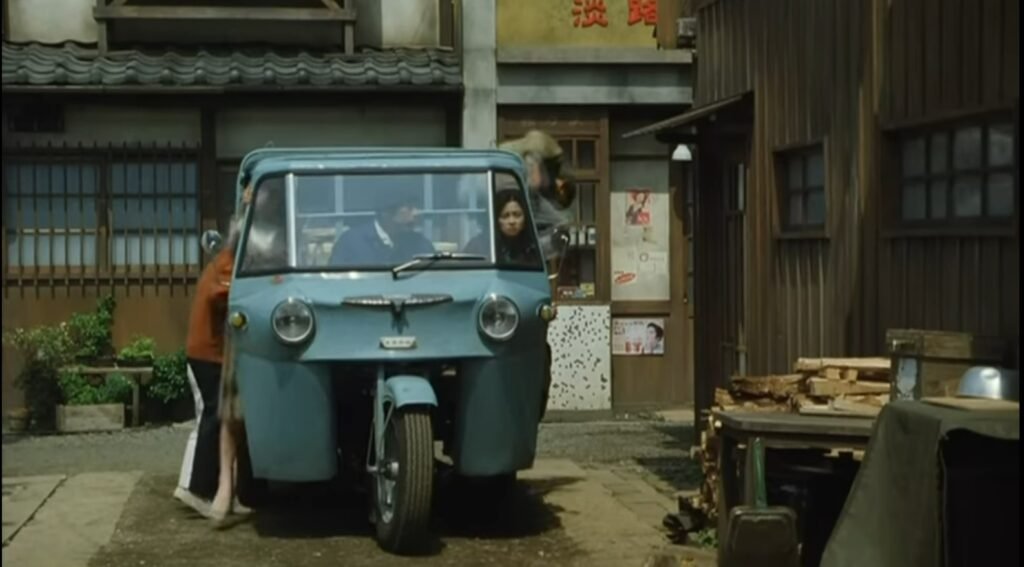
Meanwhile, Osaka keeps changing. Three-wheel trucks start to appear, followed by 1960s style cars. Subdued as always, the art direction folks only sparingly addresses those changes. Different advertising signs, slight changes to the architecture, and yes, new types of vehicles finding their way into the Tamatsu 3-chome neighborhood where Kim Shun-pei still rules.
Nothing Lasts Forever
Kim Shun-pei may have ruled his family his way for decades – mostly by terror though he does display some tender moments at times… when it seemed convenient or purposeful to him.
But ultimately, time is the currency that really counts. Time will always win… though Kim Shun-pei resists that fact up to the last minute.
At the very end, he moves to North Korea, the paradise promised by Kim Il Sung. Many a viewer might find that the fate he meets there would be exactly what Kim Shun-pei deserved.
Tsuruhashi Again
Kim Shun-pei was an extremely destructive character and his move to North Korea in the end meant that he took all his riches with him, leaving nothing to his family.
His character was however deeply rooted in Korean macho tradition. In post-war Osaka, there certainly were many immigrant family patriarchs like him. Not as extreme, of course. They were strongly protecting their own family but still focused on success and financial gain at any cost. Those were the ones who built Tsuruhashi, along with their hard-working wives, as we know it today.
























